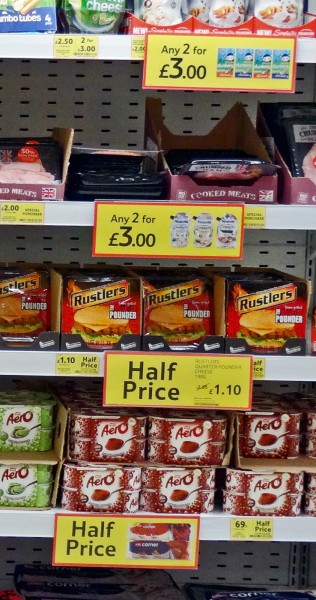 For years, the UK consumer organisation, Which?, has exposed misleading supermarket pricing practices. These include bogus price reductions, ‘cheaper’ multi-buys, smaller pack sizes and confusing special offers. Claiming that these practices are still continuing, Which? has made a super-complaint (available to designated consumer bodies) to the competition regulator, the Competition and Markets Authority (CMA).
For years, the UK consumer organisation, Which?, has exposed misleading supermarket pricing practices. These include bogus price reductions, ‘cheaper’ multi-buys, smaller pack sizes and confusing special offers. Claiming that these practices are still continuing, Which? has made a super-complaint (available to designated consumer bodies) to the competition regulator, the Competition and Markets Authority (CMA).
Commenting on this action, Which? executive director, Richard Lloyd said:
“Despite Which? repeatedly exposing misleading and confusing pricing tactics, and calling for voluntary change by the retailers, these dodgy offers remain on numerous supermarket shelves. Shoppers think they’re getting a bargain but in reality it’s impossible for any consumer to know if they’re genuinely getting a fair deal.
We’re saying enough is enough and using one of the most powerful legal weapons in our armoury to act on behalf of consumers by launching a super-complaint to the regulator. We want an end to misleading pricing tactics and for all retailers to use fair pricing that people can trust.”
The CMA will consider the issues raised under the super-complaint to establish whether any of them are significantly harming the interests of consumers. It will publish a response within 90 days from the receipt of the complaint on 21 April 2015. The possible outcomes include:
|
|
| • |
recommending the quality and accessibility of information for consumers is improved |
| • |
encouraging businesses in the market to self-regulate |
| • |
making recommendations to government to change the legislation or public policy |
| • |
taking competition or consumer enforcement action |
| • |
instigating a market investigation or market study |
| • |
a clean bill of health |
Some 40% of groceries are sold on promotion. Supermarkets are well aware that consumers love to get a bargain and use promotions to persuade consumers to buy things they might not otherwise have done.
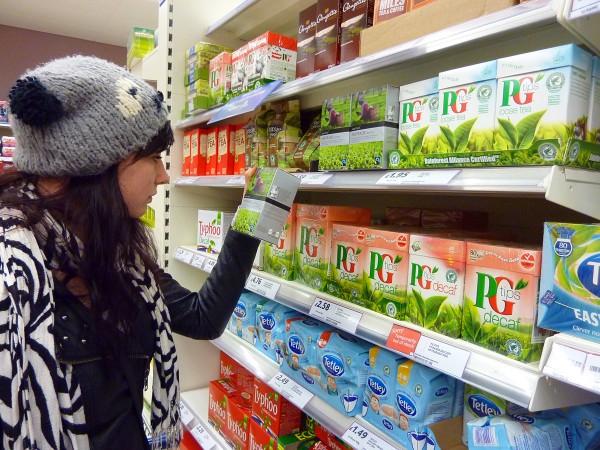 What is more, consumer rationality is bounded by the information and time available. People are often in a hurry when shopping; prices change frequently; people are often buying numerous low-value items; and they don’t know what competitors are charging. People may thus accept an offer as genuine and not spend time investigating whether it is so. Supermarkets know this and use all sorts of tactics to try to persuade people that they are indeed getting a bargain.
What is more, consumer rationality is bounded by the information and time available. People are often in a hurry when shopping; prices change frequently; people are often buying numerous low-value items; and they don’t know what competitors are charging. People may thus accept an offer as genuine and not spend time investigating whether it is so. Supermarkets know this and use all sorts of tactics to try to persuade people that they are indeed getting a bargain.
Videos
 Supermarkets Face Super-Complaint On Pricing Sky News (21/4/15)
Supermarkets Face Super-Complaint On Pricing Sky News (21/4/15)
 UK supermarkets face possible probe over pricing practices Reuters, Neil Maidment (21/4/15)
UK supermarkets face possible probe over pricing practices Reuters, Neil Maidment (21/4/15)
 Which? launches ‘super-complaint’ against supermarkets BBC News, Stephanie McGovern (21/4/15)
Which? launches ‘super-complaint’ against supermarkets BBC News, Stephanie McGovern (21/4/15)
Articles
UK supermarkets dupe shoppers out of hundreds of millions, says Which? The Guardian, Rebecca Smithers (21/4/15)
Supermarkets face inquiry into ‘rip-offs’ The Telegraph, Dan Hyde (21/4/15)
15 supermarket rip-offs that led to an inquiry The Telegraph, Dan Hyde (21/4/15)
What does Which?’s supermarket pricing complaint mean for you? The Guardian (21/4/15)
Supermarkets hit back over Which? report on pricing Financial Times (21/4/15)
Press release
Which? ‘super-complains’ about misleading supermarket pricing practices Which? (21/4/15)
CMA case page
Groceries pricing super-complaint Competition and Markets Authority (21/4/15)
Questions
- Give examples of supermarket offers that are misleading.
- Why are supermarkets able to ‘get away with’ misleading offers?
- How can behavioural economics help to explain consumer behaviour in supermarkets?
- Identify some other super-complaints have been made to the CMA or its predecessor, the Office of Fair Trading. What were the outcomes from the resulting investigations.
- What is meant by ‘heuristics’? How might supermarkets exploit consumers’ use of heuristics in their promotions?
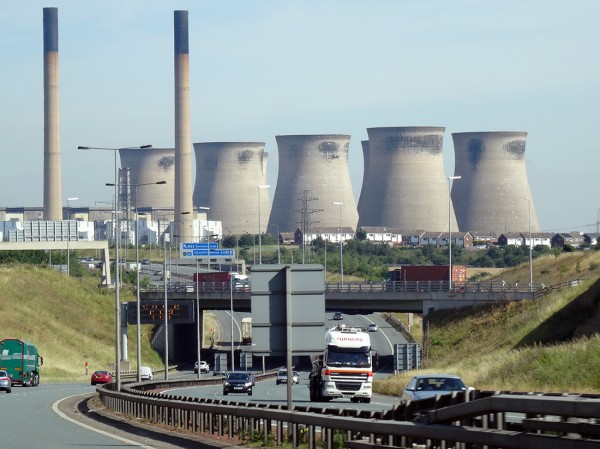 Over 90% of UK households buy their gas and electricity from one of the ‘big six’ energy suppliers – British Gas (Centrica), EDF, E.ON, npower (RWE), Scottish Power (Iberdrola) and SSE. The big six are currently being investigated by the Competition and Markets Authority (CMA) for possible breach of a dominant market position.
Over 90% of UK households buy their gas and electricity from one of the ‘big six’ energy suppliers – British Gas (Centrica), EDF, E.ON, npower (RWE), Scottish Power (Iberdrola) and SSE. The big six are currently being investigated by the Competition and Markets Authority (CMA) for possible breach of a dominant market position.
An updated ‘issues statement‘ summarises the investigation group’s initial thinking based on the evidence it has received. In paragraph 16 it states:
Comparing all available domestic tariffs – including those offered by the independent suppliers – we calculate that, over the period Quarter 1 2012 to Quarter 2 2014, over 95% of the dual fuel customers of the Six Large Energy Firms could have saved by switching tariff and/or supplier and that the average saving available to these customers was between £158 and £234 a year (depending on the supplier).
 Between 40% and 50% of customers have been with a supplier for more than 10 years. The companies are thus accused of exploiting these ‘loyalty’ customers, many of whom are too busy or ill-informed to switch to an alternative supplier. According to the uSwitch article below:
Between 40% and 50% of customers have been with a supplier for more than 10 years. The companies are thus accused of exploiting these ‘loyalty’ customers, many of whom are too busy or ill-informed to switch to an alternative supplier. According to the uSwitch article below:
This is a particular issue for the most vulnerable of customers, including the elderly, who view switching as ‘impossible’.
But the elderly were not the only consumers losing out; the CMA found that those customers most likely to be on expensive standard tariffs were less educated, or on lower incomes, or single parents, and did not necessarily have access to the Internet.
And the problem of penalising ‘loyalty’ customers who do not shop around applies in other industries, most notably banking. People who regularly switch savings accounts can get higher interest rates, often for a temporary ‘introductory’ period. Similarly, people who regularly transfer credit card debt from one card to another can take advantage of low interest rate, or even zero interest rate, deals for an introductory period.
Returning to the energy industry. Is the problem one of oligopoly? Do the big six have too much market power and, if so, what can be done about it? Should they be split up? Should regulation be tightened? Should new entrants be encouraged and, if so, what specific measures can be taken? The following articles explore the issues and possible policies.
Articles
British energy customers missed out on savings Reuters, Nina Chestney (18/2/15)
U.K. Energy Customers Could Save by Shopping Around: CMA BloombergBusiness, Aoife White (18/2/15)
Big six energy firms overcharging customers by up to £234 a year The Guardian, Sean Farrell (18/1/15)
Big six energy firms may lose quarter of customers by 2020, analysts warn The Guardian, Terry Macalister (1/10/14)
UK watchdog says big energy groups do not enjoy unfair advantage Financial Times, Michael Kavanagh (18/2/15)
CMA energy market investigation update: millions are punished for being loyal uSwitch, Lauren Vasquez (19/2/15)
Gas and electricity bills – the key questions Channel 4 News (18/2/15)
Energy customers miss big savings, says CMA inquiry BBC News, John Moylan (18/2/15)
Big Six energy companies overcharging loyal customers by up to £234 a year says watchdog Independent, Simon Read (18/2/15)
Consumer groups demand change after ‘Big Six’ accused of penalising customers out of hundreds of pounds Independent, Simon Read (19/2/15)
Energy companies’ loyalty problem lights the way forward The Conversation, Bridget Woodman (19/2/15)
CMA press releases and reports
Energy market investigation – updated issues statement Competition and Markets Authority (18/2/15)
Energy market investigation Competition and Markets Authority (23/2/15)
Energy Market Investigation: Updated Issues Statement Competition and Markets Authority (18/2/15)
Questions
- What barriers to entry exist in the electricity and gas supply markets?
- Explain how the big six are practising price discrimination. What form does it take and how are the markets separated?
- Find out what tariffs are offered by each of the big six. When you have done so, reflect on how easy it was to find out the information and why so few customers switch.
- How could more people be encouraged to ‘shop around’ and switch energy suppliers?
- Explain the five theories of harm identified by the CMA. Would a rise in market share of the smaller energy suppliers adequately combat each of the five types of harm?
- In what ways may UK energy regulation be ‘a barrier to pro-competitive innovation and change’?
- What are the arguments for and against breaking up the big six?
- What are the arguments for and against electricity and gas price control?
 Australia is a rich country. It is one of the few to have avoided a recession. This has been the result partly of successful macroeconomic policies, but largely of the huge mining boom, with Australia exporting minerals to China and other fast growing Asian economies.
Australia is a rich country. It is one of the few to have avoided a recession. This has been the result partly of successful macroeconomic policies, but largely of the huge mining boom, with Australia exporting minerals to China and other fast growing Asian economies.
But has this growth brought happiness? Are Australians having to work harder and harder to pay for their high standard of living? Indeed, do higher incomes generally result in greater happiness? The following articles explore this issue, both in an Australian context and more broadly. They look at some recent evidence.
 For example, in one study, Canadian, Chinese, Indian, and Japanese university students were asked what they held to be most important for assessing the worth of their lives. The crucial finding was that although higher incomes may be a contributing factor to increased happiness and well-being, especially for poorer people, other factors are more important. These include developing fulfilling personal relationships, whether with partners, family members or friends; gaining knowledge and wisdom; having enjoyable hobbies; having financial security (as opposed to higher incomes); having a worthwhile career; living a moral life; helping other people.
For example, in one study, Canadian, Chinese, Indian, and Japanese university students were asked what they held to be most important for assessing the worth of their lives. The crucial finding was that although higher incomes may be a contributing factor to increased happiness and well-being, especially for poorer people, other factors are more important. These include developing fulfilling personal relationships, whether with partners, family members or friends; gaining knowledge and wisdom; having enjoyable hobbies; having financial security (as opposed to higher incomes); having a worthwhile career; living a moral life; helping other people.
The question then arises whether our economic systems and incentives are geared towards achieving these outcomes. Or are we encouraged to consume more and more and to seek higher and higher incomes to feed our addiction to consumption?
Is there an information problem here? Do many individuals perceive that money will buy them happiness, whereas, in reality, money can’t buy them love?
Articles
Australia: Where the good life comes at a price BBC News Magazine, Madeleine Morris (24/2/13)
Australia has the know-how to boost wellbeing Sydney Morning Herald, Matt Wade (8/9/12)
Money can’t buy you the good life Independent, Roger Dobson (24/2/13)
The 10 Things Economics Can Tell Us About Happiness The Atlantic, Derek Thompson (31/5/12)
Yes, Money Does Buy Happiness: 6 Lessons from the Newest Research on Income and Well-Being The Atlantic, Derek Thompson (10/1/13)
The fact is, the richer you are, the happier you are The Telegraph, Allister Heath (5/2/13)
Money buys happiness? I wouldn’t bank on it The Telegraph, Christopher Howse (6/2/13)
Who Says Wealth Doesn’t Buy Happiness? The Wealthy Do CNBC, Robert Frank (4/2/13)
More Proof That Money Can’t Buy Happiness Business Insider, Aimee Groth (28/1/13)
Money Changes Everything The New York Times, Adam Davidson (5/2/13)
Why are the Chinese so sad? Maclean’s (Canada), Mitch Moxley (4/2/13)
Reports
First World Happiness Report Launched at the United Nations The Earth Institute, Columbia University (2/4/12)
World Happiness Report The Earth Institute, Columbia University, John Helliwell, Richard Layard and Jeffrey Sachs (eds.) (2/4/12)
Well-being evidence for policy: A review New Economics Foundation, Laura Stoll, Juliet Michaelson and Charles Seaford (3/4/12)
Questions
- Distinguish between necessary and sufficient conditions. Is higher income a necessary or sufficient condition (or both or neither) for an increase in happiness? Does a person’s circumstances affect the answer to this question?
- Explain what is meant by ‘rational behaviour’ at the margin in the traditional economic sense?
- If a person always behaved rationally, would they be happier than if they did not? Explain.
- Explain how information asymmetry between the two or more parties involved in a transaction may make people worse off, rather than better off, even though they were behaving rationally.
- Explain what is meant by diminishing returns to income.Do richer countries get happier as they get richer?
- How would you set about measuring happiness?
- What do you understand by the term ‘hedonic elevation and decline’? Does this provide an accurate description of you own purchasing behaviour? If so, explain whether or not you would like to change this behaviour.
- When people make economic decisions, these are normally made with bounded rationality. How may this affect the desirability of the outcomes of the decisions?
- In explaining bankers’ behaviour, Christopher Howse (author of the second Telegraph article above) states: ‘It’s the power game that keeps them happy, not the money itself. When I say “keeps them happy” I mean “feeds their addiction”. It is a negative kind of satisfaction. A morning spent without the distraction of making big bucks is a morning left exposed to the empty horror of being a little rational animal on the bare surface of the Earth lost in space.’ Do you agree? Explain why or why not.
- When people are addicted to something, would doing more of it be classed as irrational? Explain.
- Why are the Chinese so sad?
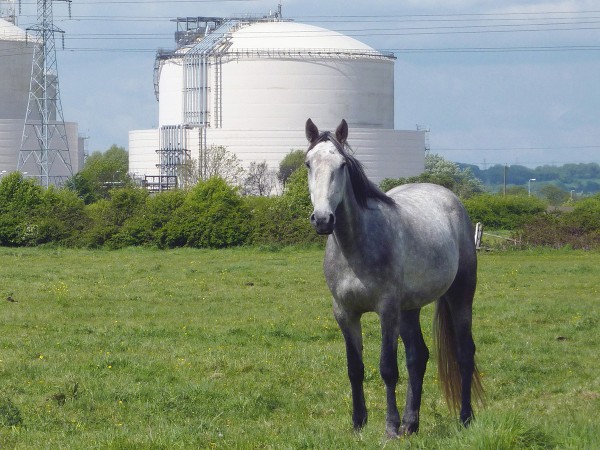 The news in many European countries has been dominated in February by the ‘horse meat scandal’. Small traces of horse meat may be the result of faulty quality control. But the significant amount of horse found in several processed meat products suggest fraud at one or more points in the supply chain from farm to supermarket or other outlet. Indeed several specific suppliers, from abattoirs to processors are facing criminal investigation.
The news in many European countries has been dominated in February by the ‘horse meat scandal’. Small traces of horse meat may be the result of faulty quality control. But the significant amount of horse found in several processed meat products suggest fraud at one or more points in the supply chain from farm to supermarket or other outlet. Indeed several specific suppliers, from abattoirs to processors are facing criminal investigation.
The scandal has put the supply chain under intense scrutiny. Part of the problem is that the supply chain is often very long and complex. As the Guardian article states:
The food and retail industries have become highly concentrated and globalised in recent decades. A handful of key players dominate the beef processing and supermarket sectors across Europe. They have developed very long supply chains, particularly for their economy lines, which enable them to buy the ingredients for processed foods from wherever they are cheapest at any point, depending on exchange rates and prices on the global commodity markets. Networks of brokers, cold stores operators and subcontracted meat cutting plants have emerged to supply rapidly fluctuating orders “just in time”. Management consultants KPMG estimate there are around 450 points at which the integrity of the chain can break down.
Then there is the huge pressure on all parts of the supply chain to reduce costs.
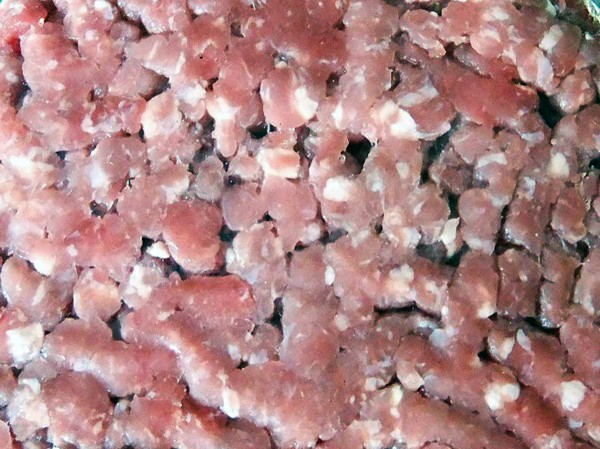 Supermarkets use their market power to drive down the prices of the products they buy from their suppliers and this has a knock-on effect backwards down the supply chain. This pressure has intensified as real wages have fallen and consumers have found their budgets squeezed.
Supermarkets use their market power to drive down the prices of the products they buy from their suppliers and this has a knock-on effect backwards down the supply chain. This pressure has intensified as real wages have fallen and consumers have found their budgets squeezed.
At the same time, beef and other meat prices have been rising as the costs of animal feed have soared. This all puts tremendous pressure on suppliers to add cheaper ingredients. Again to quote the Guardian article:
Manufacturers add other cheap ingredients including water and fat, and use concentrated proteins to bind the water and fat in. They may appear on labels as ‘seasoning’. One of the cheapest sources of these protein additives is pork rind. It is possible that horse hide is now also being used. The widespread adulteration of cheap chicken breast with pig and beef proteins and water has been uncovered in previous scandals. The beef proteins were derived from hydrolysed cattle hides. It is not illegal to use these protein concentrates so long as they are identified correctly to the manufacturer.
It is not surprising that if cheap horse meat becomes available to suppliers, such as from old horses towards the end of their working lives, some processing companies may be tempted to add it fraudulently, stating that it is beef.
The articles look at the issues of long and complex supply chains in the processed food industry and assess why they have evolved into their current form and the difficulties in regulating them.
Horsegate: heed economics of the cold chain The Grocer, Andrew Godley (16/2/13)
Horsemeat scandal: the essential guide The Guardian, Felicity Lawrence (15/2/13)
After the horse has been bolted The Economist (16/2/13)
Slavery, not horse meat, is the real scandal on our doorstep The Telegraph, Fraser Nelson (14/2/13)
Industry must take the reins on food safety Globe and Mail (Canada)Sylvain Charlebois (15/2/13)
Supply chains changed the growth model The Economist, Richard Baldwin (15/8/12)
Supply-chain management The Economist (6/4/09)
Tesco pledges to open up supply chain after horse meat scandal The Telegraph (16/2/13)
Horse meat scandal: Shoppers who buy ‘cheapest food’ at risk The Telegraph, James Quinn, Jason Lewis and Patrick Sawer (16/2/13)
Let Them Eat Horse Bloomberg, Marc Champion (15/2/13)
Scandal shows meat supply chain must be policed heraldscotland (14/2/13)
MPs push for new powers for FSA as officials seize yet more suspect meat Independent, Martin Hickman (13/2/13)
Questions
- Why do supermarkets and their suppliers use long supply chains?
- Explain the concepts of ‘countervailing power’ and ‘monopsony or oligopsony power’? How do they apply in the processed meat supply chain?
- Identify the types of transactions costs in the processed meat industry.
- In what ways do consumers (a) gain and (b) lose from such supply chains?
- Why is the problem of fraud in processed food supply chains likely to have intensified in recent years?
- How have supermarkets reacted to the horse meat scandal? Why has it taken the scandal to make them react in this way?
- To what extent is the problem simply one of inaccurate labelling?
- To what extent is there a principal–agent problem in the processed meat supply chain?
When people shop in supermarkets they often look for what’s on special offer. After all, everyone likes a bargain. About 35–37% of supermarket items are on special offer at any one time and around 50% of the money spent by customers is on such items.
But things aren’t always as they seem. Supermarkets use clever marketing to persuade people that they’re getting a good deal, while sometimes it’s nothing of the sort. Examples include putting up prices for a while and then reducing them again saying “huge reduction”; or promoting an offer of, say, “three for £2”, when you could buy an individual item for 60p; or using the word “now” £2.50 to imply that the previous price was higher, when in fact it wasn’t; or selling a double-sized “value pack” for more than double the price of the regular size. These tricks are commonplace in supermarkets.
Sometimes the wary consumer will be able to find out which offers are genuine, but it’s not always that easy. And even if you do buy something at a genuine discount, is it something you really want? Or have you been persuaded to buy it simply because it’s on offer? Supermarkets study consumers’ psychology. They find clever ways of promoting products to make us feel that we have done well in getting a bargain.
The following programme in the BBC’s Panorama series looks at the big four supermarkets in the UK – Tesco, Asda, Sainsbury’s and Morrisons – which between then have 68% of supermarket sales. It gives examples of some of the not so special offers and how consumers are being hoodwinked.
Webcast
 Revealed: The truth about supermarket ‘bargains’ BBC Panorama (clip), Sophie Raworth (5/12/11)
Revealed: The truth about supermarket ‘bargains’ BBC Panorama (clip), Sophie Raworth (5/12/11)
 The Truth About Supermarket Price Wars BBC Panorama (full programme), Sophie Raworth (5/12/11)
The Truth About Supermarket Price Wars BBC Panorama (full programme), Sophie Raworth (5/12/11)
Articles
What you need to know about the supermarket price wars Totally Money (7/12/11)
Supermarkets accused of misleading consumers The Telegraph, Nick Collins (5/12/11)
Supermarket price war: Can they all be cheapest? BBC News, Anthony Reuben (9/12/11)
Are Our Retailers Criminals? International Supermarket News, Laura Elliott (6/12/11)
Supermarket deals “not what they seem” warns expert Retail Gazette, Gemma Taylor (6/12/11)
Questions
- What types of misleading offers are identified in the Panorama report?
- For what reasons are consumers “taken in” by such offers? Does this imply that consumers are irrational?
- Does intense oligopolistic competition between the big four supermarkets lead to lower prices?
- How is it possible for two supermarkets to claim that they are cheaper than the other? How would you decide which supermarket was generally cheaper?
- Why might it be difficult for an independent agency to do a comparison of prices of different supermarket chains?
 For years, the UK consumer organisation, Which?, has exposed misleading supermarket pricing practices. These include bogus price reductions, ‘cheaper’ multi-buys, smaller pack sizes and confusing special offers. Claiming that these practices are still continuing, Which? has made a super-complaint (available to designated consumer bodies) to the competition regulator, the Competition and Markets Authority (CMA).
For years, the UK consumer organisation, Which?, has exposed misleading supermarket pricing practices. These include bogus price reductions, ‘cheaper’ multi-buys, smaller pack sizes and confusing special offers. Claiming that these practices are still continuing, Which? has made a super-complaint (available to designated consumer bodies) to the competition regulator, the Competition and Markets Authority (CMA). What is more, consumer rationality is bounded by the information and time available. People are often in a hurry when shopping; prices change frequently; people are often buying numerous low-value items; and they don’t know what competitors are charging. People may thus accept an offer as genuine and not spend time investigating whether it is so. Supermarkets know this and use all sorts of tactics to try to persuade people that they are indeed getting a bargain.
What is more, consumer rationality is bounded by the information and time available. People are often in a hurry when shopping; prices change frequently; people are often buying numerous low-value items; and they don’t know what competitors are charging. People may thus accept an offer as genuine and not spend time investigating whether it is so. Supermarkets know this and use all sorts of tactics to try to persuade people that they are indeed getting a bargain. Supermarkets Face Super-Complaint On Pricing Sky News (21/4/15)
Supermarkets Face Super-Complaint On Pricing Sky News (21/4/15) UK supermarkets face possible probe over pricing practices Reuters, Neil Maidment (21/4/15)
UK supermarkets face possible probe over pricing practices Reuters, Neil Maidment (21/4/15) Which? launches ‘super-complaint’ against supermarkets BBC News, Stephanie McGovern (21/4/15)
Which? launches ‘super-complaint’ against supermarkets BBC News, Stephanie McGovern (21/4/15)




